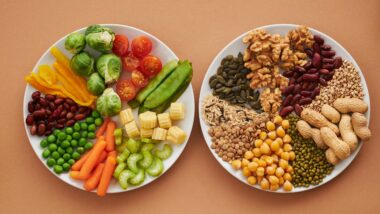Eating For A Healthy Heart
Bad cholesterol or a bad diet is something we all experience at some point in time. It’s impossible to eat healthy our whole lives, even though we may try hard to do it. Eating for a healthy heart is something everyone should try to do, especially when it comes to restoring health and reducing heart attacks.
Your Heart and Food
We know these things for sure – a diet high in saturated fats will help raise your cholesterol, which is a risk factor for heart disease. People that are obese are more prone to heart disease. A diet high in sodium may elevate your blood pressure, leading to inflammation and even heart disease.
To help prevent heart disease and improve your health, put the tips below to good use.
Eat Plenty of Fish
Herring, sardines, and salmon are all excellent sources of Omega 3 essential fatty acids. Other fish are great to, although Omega 3 may help to get your cholesterol down to a healthier level.

Choosing Healthy Fats and Oils
Saturated fat will increase the risk of heart disease. It’s found in meat, butter, and even coconut oil. You should avoid them until your cholesterol levels are down and you are at a healthy weight. Even those that love red meats can enjoy seafood and nuts for their main sources of protein.
Monounsaturated fats such as olive oils will help you to protect your heart. Olive oil is an ideal choice for cooking, dressing, or even as a dipping sauce.
Plenty of Fiber
Fiber can help you control your cholesterol. You can find fiber in whole grain products to help control sugar absorption as well, which will help you keep your digestive system healthy.
Choosing Carbohydrates
Eating for your heart involves staying away from sugary foods such as candy, cookies, cakes, and pastries. Eating a lot of sugar isn’t good for your heart disease at all. Healthy carbohydrates involve whole grain breads, whole grain pasta, brown rice, and a lot of vegetables. You should make fruits and vegetables the main aspect of your diet.
Healthy Cooking Methods
Stir frying and sauteing with olive oil or canola oil are both great methods, as you shouldn’t dip your food in batter and fry it anymore. If you cook chicken, remove the skin and bake it in the oven in foil.
Instead of frying your fish you should always bake it. Steaming your vegetables can help maintain the most nutrients. You should use cream sauces or lots of butter anymore either. When you eat vegetables, try squeezing lemon juice on them or using your favorite seasonings.
As you make the proper changes to your diet, keep in mind that it takes time for them to become habits. Eating healthy is always great for your body and your lifestyle, especially when it comes to your heart and the prevention of heart disease.
Healthy Fat Intake
This information is aimed at helping you to reduce your fat intake. The average individual eats too much fat, a factor that’s linked to a variety of health problems, including cancer. Diets that are high in fat are associated with breast and colon cancer, with some studies linking high fat to prostate cancer as well.
A majority of people can bring their fat intakes down to a healthy range by making a few adjustments in the way they shop, cook, and prepare the foods they eat.
Now days, it’s getting easier and easier to control the amount of fat you consume. The fat content of foods are now available through the nutrition label and through brochures distributed by food companies and even fast food restaurants.

You can use this information on nutrition to choose lower fat foods by comparing products and food brands. Once you have a rough idea of what a healthy intake of fat is, you’ll know what you can and what you can’t have.
From day to day, the amount of fat you eat will vary. Some meals and some days will be higher in fat than others. Even high fat meals can be kept in line with healthy eating as long as you balance those days accordingly. The average fat intake over the course of weeks and months is important, not the fat intake of every meal and food you consume.
Younger adults and high active adults who have higher calorie needs can probably eat a little more fat. Older adults and those that aren’t very active should aim for a lower fat intake. This way, you can control your fat intake and avoid the many problems that fat is associated with.


